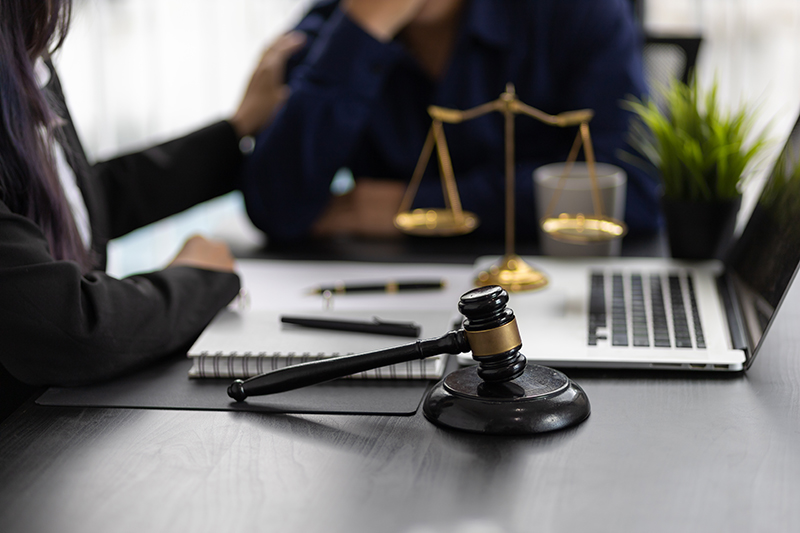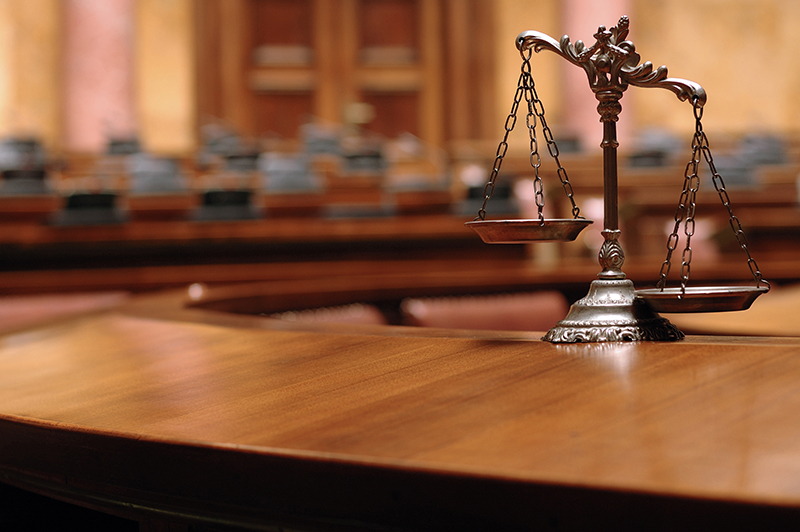Filing a lawsuit can feel overwhelming, especially when each step could make or break your case. Most people think success comes down to hiring the right lawyer, but that is only part of the equation. Nearly 75 percent of cases are lost or dismissed mainly because of weak documentation or missed deadlines. The real difference happens long before you ever set foot in a courtroom.
Step 1: Gather Evidence and Document Your Case
Successful lawsuits are built on solid documentation and compelling evidence. This critical first step determines how effectively you can demonstrate your legal claim and support your narrative of events. The process of gathering evidence requires meticulous attention to detail and strategic documentation that will strengthen your potential lawsuit.
Begin by collecting all relevant documentation related to your incident. This means preserving physical evidence, medical records, photographs, witness statements, and any communication connected to the event. For accident cases, photographic evidence becomes crucial. Take comprehensive pictures of injury sites, property damage, and environmental conditions. If you were involved in a vehicle accident, our guide on recording damage at an accident scene provides excellent step-by-step instructions for capturing critical visual documentation.
Medical documentation serves as another fundamental component of evidence gathering. Request complete copies of all medical reports, treatment records, diagnoses, and bills related to your injury. These documents not only demonstrate the extent of your damages but also establish a clear timeline of medical intervention. Physicians’ notes, diagnostic test results, and treatment plans create a comprehensive medical narrative that substantiates your claim.
When collecting evidence, maintain a detailed chronological record. Create a dedicated folder or digital file where you organize all documents systematically. Include dates, contact information for involved parties, incident reports, and correspondence. Time-stamped and organized evidence presents a professional and credible foundation for your legal case. Remember that insurance companies and legal professionals will scrutinize every detail, so precision matters.
While gathering evidence, protect the integrity of your documentation. Make multiple copies of critical documents, store originals in a secure location, and avoid altering any records. Digital backups can provide additional security. Consistency and thoroughness in your evidence collection process will significantly impact the strength of your potential lawsuit.
Below is a summary table outlining what types of evidence and documentation to collect, along with their purposes, when preparing to file a lawsuit.
| Type of Evidence | Examples | Purpose |
|---|---|---|
| Physical Evidence | Damaged property, objects from the scene | Substantiates the events and physical loss |
| Photographic Documentation | Photos of injuries, accident scene, damaged items | Visual proof to support narrative and claims |
| Medical Records | Treatment reports, bills, physician notes | Establishes injury extent and medical timeline |
| Witness Statements | Written or recorded accounts from witnesses | Provides third-party perspectives |
| Communication Records | Emails, letters, text messages | Documents conversations and agreements |
| Incident Reports | Police or accident reports | Official documentation of events |
| Chronological Timeline | Dated notes, organized folder | Ensures evidence is organized and credible |

Step 2: Consult with a Qualified Attorney
Choosing the right attorney can make or break your lawsuit. This critical step involves finding a legal professional who understands the nuances of your specific case and can provide strategic guidance through the complex legal landscape. Your attorney will serve as your legal advocate, interpreter of complex legal procedures, and strategic partner in pursuing justice.
Begin by researching attorneys who specialize in your specific type of legal claim. Different legal practices focus on specific areas such as personal injury, employment law, or medical malpractice. Look for attorneys with proven track records in cases similar to yours. Professional legal directories, state bar association referrals, and personal recommendations can provide valuable leads. Learn about selecting the right legal representation to ensure you make an informed decision.
Schedule initial consultations with potential attorneys. Most reputable law firms offer free or low-cost initial consultations where you can discuss your case details. During these meetings, prepare a comprehensive overview of your situation, bringing all collected evidence from your first step. Ask pointed questions about the attorney’s experience, success rates, potential strategy, and fee structure. Pay attention to how well they listen and communicate. A good attorney should provide clear, straightforward explanations and demonstrate genuine interest in your case.
During the consultation, discuss potential legal strategies and realistic outcomes. Experienced attorneys will provide an honest assessment of your case’s strengths and potential challenges. They will help you understand potential settlement ranges, litigation timelines, and the probability of success. Transparency is key in establishing a trusting attorney-client relationship. Ensure you understand their fee arrangement, whether it’s a contingency fee (where they only get paid if you win) or an hourly rate.
Finalize your decision by carefully reviewing the representation agreement. Understand all terms, including fee structures, communication expectations, and case management approaches. Trust your instincts about the attorney’s competence and your comfort level working with them. The right attorney will not only provide legal expertise but also offer emotional support during what can be a challenging legal journey.

Step 3: Draft and File the Complaint
The complaint represents the formal legal document that initiates your lawsuit, transforming your personal grievance into an official legal proceeding. This critical document serves as the foundation of your legal claim, outlining the specific legal arguments, factual circumstances, and requested remedies. Your complaint must be precise, comprehensive, and legally strategic.
Working closely with your attorney, draft a complaint that clearly articulates the core elements of your case. Begin by providing a detailed narrative of the events, including dates, specific actions, and the harm you experienced. Identify the legal theories supporting your claim, whether they involve breach of contract, personal injury, discrimination, or other legal grounds. Each paragraph should present a concise, factual statement that builds a logical progression of your argument. Your attorney will help ensure that the language meets strict legal standards and effectively communicates the basis of your lawsuit.
The structural components of a complaint typically include an introduction identifying the parties involved, a statement of jurisdiction explaining why the court can hear the case, a detailed factual background, specific legal claims, and the relief or damages you are seeking. Understand the critical steps in preparing your legal documentation to ensure your complaint is comprehensive and legally sound. Pay careful attention to the specific requirements of your jurisdiction, as formatting and procedural rules can vary significantly between state and federal courts.
Once your complaint is drafted, your attorney will help you file it with the appropriate court. This process involves submitting the document to the court clerk, paying required filing fees, and ensuring proper service of the complaint to the defendant. Timing is crucial in lawsuit filing, as statutes of limitations can restrict your ability to bring a legal claim if too much time has passed since the incident. Your attorney will verify that you are filing within the legally permitted timeframe, protecting your right to seek legal recourse.
After filing, expect the court to provide a case number and initial hearing date. The defendant will be formally notified and given an opportunity to respond, typically through an answer or motion to dismiss. This marks the official beginning of your legal journey, transforming your personal dispute into a structured legal process where your claims will be evaluated by the judicial system.
Step 4: Serve the Complaint to the Defendant
Serving the complaint represents a crucial legal step that officially notifies the defendant about the lawsuit and provides them an opportunity to respond. This process is more than a simple delivery of documents it is a formal legal procedure with specific requirements that must be followed precisely to ensure the validity of your legal action.
Proper service of process is fundamental to maintaining the legal integrity of your lawsuit. Your attorney will coordinate the service, which typically involves delivering the complaint and a summons through approved methods. These methods can include personal delivery by a licensed process server, certified mail with return receipt, or in some cases, alternative service methods approved by the court when direct contact is challenging. Learn more about effective legal documentation procedures to understand the nuances of this critical step.
The actual service must be completed by an unbiased third party who is at least 18 years old and not involved in the lawsuit. Professional process servers specialize in this task, ensuring that the defendant receives the documents in a legally recognized manner. They will provide a detailed proof of service document, which must be filed with the court to confirm that the defendant has been officially notified.
Timing is critical you typically have a limited window to complete service, often 30 to 90 days from the initial filing of the complaint.
Different defendants may require different service approaches. For individual defendants, personal hand delivery is most common. For businesses, service might involve delivering documents to a registered agent or corporate officer. If the defendant cannot be easily located, the court may allow alternative service methods such as publication in a local newspaper or service through electronic means. Your attorney will navigate these complexities, ensuring that the service meets all legal requirements and preserves the validity of your lawsuit.
This table provides a comparative overview of different service methods available when serving a legal complaint, outlining who typically performs each method, and any special notes or limitations.
| Service Method | Who Delivers | Special Notes/Limitations |
|---|---|---|
| Personal Delivery | Licensed process server | Most common for individual defendants |
| Certified Mail | Postal service or process server | Must have return receipt requested |
| Service to Agent | Professional process server | Used for businesses via registered agent |
| Alternative Methods | As approved by court | Allowed if standard service is not possible |
| Service by Publication | Newspaper | Used when defendant cannot be located |
| Electronic Means | As approved by court | Sometimes allowed for hard-to-find defendants |
Once service is completed, the defendant has a specific timeframe to respond, typically 20 to 30 days depending on the jurisdiction. They may file an answer admitting or denying the allegations, or they might file a motion to dismiss the case. This response marks the beginning of the formal legal dialogue and sets the stage for potential negotiation, settlement discussions, or further litigation proceedings.
Step 5: Prepare for Discovery and Court Hearings
Discovery represents the investigative phase of your lawsuit, where both parties exchange information and gather evidence to build their respective cases. This critical stage can make or break your legal strategy, requiring meticulous preparation, strategic thinking, and comprehensive documentation of all relevant information.
The discovery process typically involves several key mechanisms. Interrogatories are written questions that must be answered under oath, depositions involve verbal testimony taken under oath, and document requests allow each side to obtain relevant records. Understand the intricacies of legal depositions to prepare effectively for this potentially challenging phase. Your attorney will guide you through preparing responses that are truthful, strategic, and protect your legal interests.
Preparation is paramount during the discovery phase. Work closely with your attorney to organize all documentation, anticipate potential questions, and develop a comprehensive narrative that supports your legal claim. This means reviewing every piece of evidence collected, understanding how each document or testimony might be interpreted, and preparing clear, concise responses. Practice potential deposition scenarios with your legal team, learning how to communicate effectively while avoiding statements that could potentially harm your case.
Court hearings require a different type of preparation. These formal proceedings demand a professional demeanor, clear communication, and a thorough understanding of your case details. Your attorney will help you understand courtroom protocols, prepare your testimony, and develop strategies for presenting your evidence most effectively. This might involve mock trial preparations, where you practice answering potential questions, understanding courtroom etiquette, and maintaining composure under potentially stressful questioning.
As discovery progresses, remain flexible and responsive. Legal strategies may shift based on new information uncovered, and your ability to adapt quickly can significantly impact your case’s outcome. Maintain open communication with your attorney, promptly provide requested information, and trust their guidance through this complex legal process. The discovery phase is not just about collecting information it is about building a compelling, legally sound narrative that supports your claim and maximizes your potential for a successful resolution.

Step 6: Monitor Your Case Progress and Response
Monitoring your lawsuit’s progress is a critical responsibility that requires active engagement, strategic attention, and consistent communication with your legal team. This step transforms you from a passive participant to an informed collaborator in your legal journey. Your proactive involvement can significantly impact the trajectory and potential outcome of your case.
Establish a systematic approach to tracking your case. This means creating a dedicated communication protocol with your attorney, setting up regular check-in meetings, and maintaining a comprehensive file of all legal correspondence. Understand the nuances of legal case management to ensure you stay informed throughout the process. Request detailed status updates after each significant legal event, such as discovery submissions, court hearings, or settlement negotiations.
Prompt response to legal communications is crucial. When your attorney or the court sends documents, requests information, or requires your participation, treat these with utmost urgency. Develop a system for quickly reviewing and responding to legal correspondence. This might involve designating a specific email address for legal communications, setting up digital file storage for important documents, and establishing a routine for checking and addressing legal matters promptly.
Stay informed about potential settlement opportunities and legal strategies. Your attorney will provide guidance on when to consider settlement offers and how to evaluate their fairness. Understanding the potential risks and benefits of proceeding to trial versus accepting a settlement requires careful analysis. Be prepared to have candid discussions with your legal team about your goals, financial considerations, and emotional readiness for prolonged litigation.
Documenting your case’s progression serves multiple purposes. Maintain a personal journal of key events, conversations, and potential impacts on your life. This not only helps you track the lawsuit’s progress but can also provide valuable context for your attorney. Keep copies of all communications, court filings, and medical records related to your case. Your meticulous record-keeping can prove invaluable if unexpected legal challenges arise or if you need to provide additional context during negotiations or court proceedings.
Facing the Complicated Journey of Filing a Lawsuit? Take Control With Expert Guidance
From gathering mountains of evidence and documenting every step to meeting strict court deadlines and understanding complex legal language, the lawsuit process described in our guide can feel overwhelming. Missing any critical detail or deadline can weaken your case or lead to lost compensation. When issues like personal injury, wrongful death, or workplace accidents turn your life upside down, you deserve a partner who knows how to build a rock-solid claim structure and defend your best interests every step of the way. Discover why experience matters and how a dedicated legal team can help you avoid costly mistakes.
If you want seasoned legal professionals to fight for the compensation you deserve, connect with Goldberg & Loren now. Our attorneys have a proven record with personal injury, auto accidents, premises liability, and employment law. We offer a no-win no-fee commitment and decades of experience handling cases just like yours. Ready to turn your evidence into real results? Reach out for a confidential consultation today and let us guide you through your next step. There is no time to lose—take charge of your future with trusted support from start to finish.
Frequently Asked Questions
What is the first step to filing a lawsuit?
Gathering evidence and documenting your case is the critical first step. This involves collecting all relevant documentation, such as medical records, photographs, and witness statements, to support your legal claim.
How do I choose the right attorney for my lawsuit?
Research attorneys who specialize in your type of legal claim. Look for those with a proven track record in similar cases and schedule initial consultations to discuss your case details and evaluate their experience and communication style.
What is a complaint in a lawsuit?
A complaint is the formal legal document that initiates your lawsuit. It outlines the specific legal arguments, factual circumstances, and requested remedies, serving as the foundation of your legal claim.
What happens during the discovery phase of a lawsuit?
During the discovery phase, both parties exchange information and gather evidence. This includes interrogatories, depositions, and document requests, which are essential for building a strong case and preparing for court hearings.

